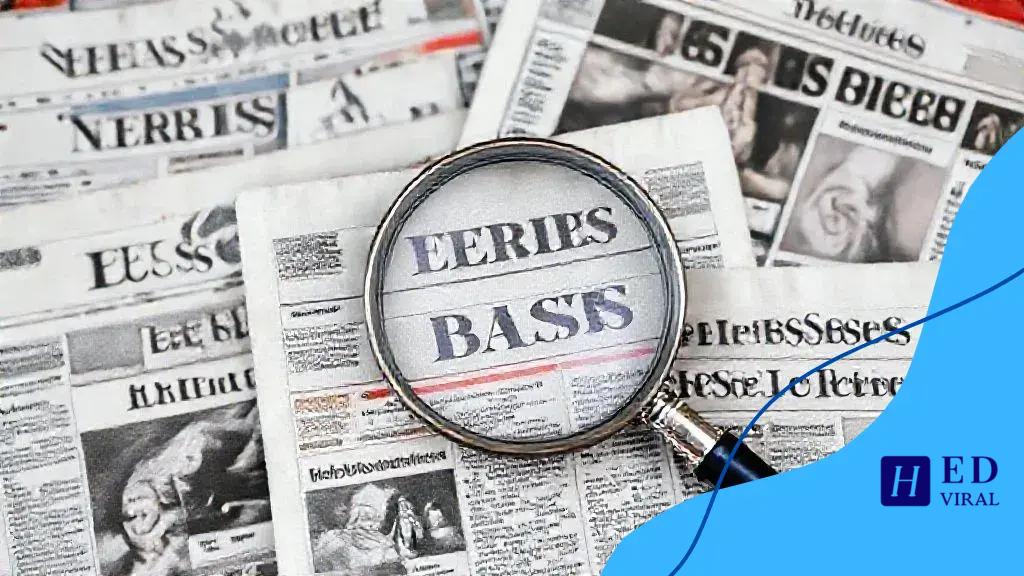Media bias exposure: uncovering the hidden truths

Promoting unbiased media consumption involves diversifying news sources, engaging in discussions, questioning biased language, and utilizing fact-checking to ensure a well-informed understanding of current events.
Media bias exposure is essential for navigating today’s complex information landscape. Have you ever wondered how media influences your views and beliefs? This article explores the nuances of bias in reporting and offers insights on becoming a more discerning consumer of news.
Understanding media bias
Understanding media bias is crucial for navigating the information we encounter daily. It affects how stories are reported and perceived, shaping our opinions and beliefs. By recognizing media bias, individuals can become more informed consumers of news.
What is Media Bias?
Media bias occurs when journalists or news organizations present information in a manner that is not impartial. This can manifest through the choice of words, stories, and visuals used in reporting. Different types of bias include:
- Selection bias: Choosing which stories to cover or ignoring others.
- Omission bias: Leaving out key facts that could alter the narrative.
- Framing bias: Presenting information in a way that influences perception.
Each of these biases affects how audiences interpret the news. For instance, if a news outlet consistently highlights a particular viewpoint, it may lead audiences to develop a skewed understanding of an issue.
How Bias Influences Perception
The way information is presented can alter our perception significantly. For example, two different media outlets may report on the same event but highlight opposite angles, leading to conflicting interpretations among audiences. This divergence demonstrates the power of framing in shaping public opinion.
Recognizing media bias helps individuals critically analyze the information they consume. By understanding the techniques used by various media outlets, readers can assess stories more effectively.
It is essential to consider not just what is said but how it is said. This critical approach enables deeper engagement with news and encourages discussions about evolving narratives.
The impact of biased reporting
The impact of biased reporting can be profound, influencing how news is understood by the public. When media outlets exhibit bias, they shape the narrative in ways that can lead to misconceptions and polarized viewpoints. This intentional or unintentional slant complicates public discourse and distorts the truth.
Consequences of Biased Reporting
Biased reporting can create significant consequences, affecting not just individual opinions but also societal norms. The spread of biased information can fuel divisiveness and conflict.
- Public mistrust: Consistent bias can lead audiences to distrust news sources.
- Polarization: Biased narratives can deepen societal divides, making it harder for people to find common ground.
- Informed decision-making: When reports lack balance, it hampers people’s ability to make informed decisions.
Ultimately, the implications of biased reporting extend beyond the media itself. They influence public policy, elections, and social movements, illustrating the need for awareness and critical evaluation.
Role of Critical Thinking
To counteract the impact of biased reporting, critical thinking is essential. By questioning sources and analyzing different perspectives, individuals can discern fact from opinion. This process promotes a more comprehensive understanding of issues at hand.
Moreover, recognition of biased reporting empowers audiences to seek out diverse viewpoints. Engaging with a range of sources fosters a more balanced perspective, which is crucial in a democratic society.
Recognizing biased language and framing

Recognizing biased language and framing is vital for understanding the subtleties behind news reporting. Words have power, and the way they are used can shape perceptions and emotions. By spotting what seems like neutral language, it becomes clearer how bias infiltrates journalism.
What is Biased Language?
Biased language includes words that carry emotional weight or connotations not based on facts. This kind of language can lead audiences to draw specific conclusions. Some examples of biased terms include:
- Loaded words: These are words that evoke strong feelings, like “rebels” versus “freedom fighters”.
- Emotionally charged descriptions: Phrases that elicit a strong response, such as “devastating loss” versus “unfortunate event”.
- Stereotyping: Generalizations that simplify complex issues, like labeling a group as an “angry mob”.
Identifying biased language helps readers to analyze what motivations may exist behind the word choices in a report. For example, a report describing a protest may emphasize violence over peaceful demonstration, which can influence how the public perceives the event.
The Importance of Framing
Framing involves how information is presented. It influences how stories are perceived and understood. A simple rephrasing can change the tone and sentiment of a story significantly. For instance, a report can frame a political leader as “decisive” or “dictatorial” based on the language employed.
By recognizing different forms of framing, audiences can better gauge the intent of media sources. Questioning the narrative reveals how biases operate, allowing people to confront and challenge the information they receive.
Understanding biased language and framing equips readers with the tools they need for critical thinking. This empowers them to seek out fairer and more balanced views, promoting informed discussions about current events.
Strategies to analyze news critically
Strategies to analyze news critically are essential for anyone wanting to navigate the complex landscape of media today. With various outlets presenting news, understanding how to evaluate them is crucial. By adopting certain methods, individuals can become better at discerning reality from bias.
Understand the Source
One of the first steps in critical news analysis is to evaluate the source. Different media outlets have varying reputations for reliability. Checking the following can help:
- Credibility: Is the source known for accurate reporting?
- Ownership: Who owns the outlet, and what might be their agenda?
- Expertise: Does the publication have a history of addressing specific issues thoughtfully?
By investigating these factors, readers can better assess the reliability of the information being presented.
Check Multiple Sources
Another effective strategy is to cross-reference news stories. Relying on multiple sources can provide different perspectives and a clearer picture of the topic at hand. It also helps identify where biases may exist. When one source highlights specific details while another omits them, it’s vital to dig deeper.
Moreover, seeking out contrasting viewpoints can enrich understanding. By reading diverse opinions, individuals expand their knowledge and challenge their own beliefs.
Question the Language Used
Critical news analysis also involves scrutinizing the language in reports. Look for loaded words or emotionally charged phrases that may indicate bias. Identifying these terms helps reveal underlying bias in reporting and encourages readers to think critically about the information presented.
For instance, the use of terms like “disaster” versus “challenge” can significantly alter public perception of an event.
How to promote unbiased media consumption
How to promote unbiased media consumption is essential for fostering a well-informed public. By encouraging individuals to approach news with a critical eye, we can create a more discerning audience that values accuracy and fairness. Embracing certain strategies can significantly enhance our media literacy.
Diversify Your Sources
One of the most effective ways to promote unbiased media consumption is to seek out a variety of news sources. By consuming content from different perspectives, like local, national, and international outlets, readers can get a more rounded view of events. This practice helps minimize echo chambers where only one viewpoint is amplified.
- Choose reputable sources: Focus on media outlets known for journalistic integrity.
- Explore alternative viewpoints: Reading opinions from across the political spectrum can broaden understanding.
- Utilize fact-checking sites: These resources help verify claims and confirm accuracy.
When readers are aware of diverse perspectives, they can better understand complex issues and make informed decisions.
Engage in Discussions
Encouraging dialogues about news can significantly enhance critical thinking skills. Engaging in discussions with others promotes the exchange of ideas and helps clarify understanding. Conversations allow individuals to challenge their own biases and expand their viewpoints.
When discussing news topics, here are a few tips to consider:
- Ask open-ended questions: This encourages deeper thinking and analysis of the facts.
- Listen actively: Understanding others’ opinions helps broaden one’s perspective.
- Avoid hostility: Keep discussions constructive and respectful, focusing on ideas rather than personal attacks.
By fostering an environment where respectful dialogue occurs, people can learn from one another and recognize differing viewpoints.
Practice Critical Thinking
Finally, it is vital to cultivate critical thinking skills when consuming news. Viewers and readers should not accept information at face value. They should question the validity of the information, analyze sources, and recognize biases. This habit promotes a healthier media environment by encouraging individuals to think critically.
Incorporating these strategies into daily media consumption can lead to more informed citizens who value truth and seek fairness in reporting.
FAQ – Frequently Asked Questions about Unbiased Media Consumption
Why is it important to diversify my news sources?
Diversifying news sources provides a well-rounded view of events and reduces exposure to bias.
How can discussions help in understanding news better?
Engaging in discussions allows for the exchange of ideas, helping to challenge our own beliefs and expand perspectives.
What should I look for to identify biased language in news?
Look for emotionally charged words or phrases that may influence perception, such as ‘crisis’ versus ‘issue’.
How can fact-checking improve my media consumption?
Using fact-checking websites helps verify information, ensuring that claims are accurate and reducing the chances of spreading misinformation.






